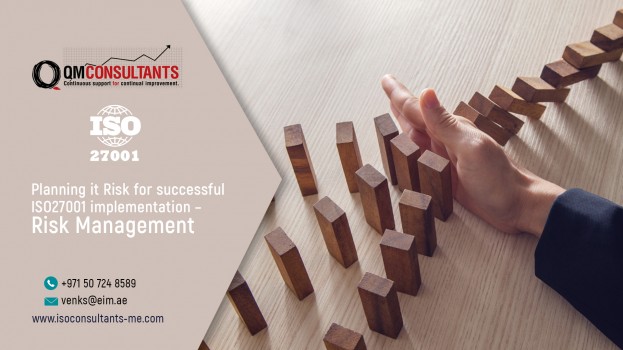
Organizations today face a myriad of challenges in ensuring the confidentiality, integrity, and availability of their information. ISO/IEC 27001:2022 provides a robust framework for Information Security Management Systems (ISMS) to address these challenges. In this blog, we will delve into the crucial steps of information security risk assessment as outlined in ISO 27001, providing valuable insights for organizations preparing for certification.
Understanding the Landscape: 6.1.1 General
When planning for an ISMS, organizations must consider the issues and requirements outlined in ISO 27001. This includes determining risks and opportunities to ensure the ISMS achieves its intended outcomes, prevents undesired effects, and facilitates continual improvement. The organization should meticulously plan actions to address these risks and opportunities, integrating and implementing them into ISMS processes. Furthermore, evaluating the effectiveness of these actions is key to a successful information security strategy.
Navigating Risk: 6.1.2 Information Security Risk Assessment
Defining the Process
ISO 27001 mandates the establishment and application of an information security risk assessment process. This process should include:
1. Risk Acceptance Criteria - Define clear parameters for risk acceptance, considering the organization's risk appetite and tolerance. This involves specifying the level of risk the organization is willing to accept for different aspects of its information security.
2. Criteria for Performing Information Security Risk Assessments - Establish guidelines for conducting risk assessments. This should include the frequency of assessments, the scope of assessments, and the methodologies to be employed. Ensure that the criteria align with the organization's objectives and compliance requirements.
1. Define Scope - Clearly delineate the scope of the risk identification process. Identify the assets, processes, and systems that fall within the scope of the Information Security Management System (ISMS).
2. Identify Threats and Vulnerabilities - Systematically identify potential threats to the confidentiality, integrity, and availability of information. Simultaneously, identify vulnerabilities that could be exploited by these threats. Consider internal and external factors that may pose risks.
3. Asset Inventory - Create a comprehensive inventory of assets, including information systems, data repositories, personnel, and any other elements critical to the organization's operations. This will form the basis for understanding what needs protection.
4. Evaluate Existing Controls - Assess the effectiveness of existing controls. Identify strengths and weaknesses in the current security measures. This step helps in understanding the baseline security posture and areas that require improvement.
i. Likelihood Assessment
Define a scale for assessing the likelihood of a risk event occurring.
Use terms such as "frequent," "occasional," "remote" to quantify likelihood.
Consider historical data, expert judgment, and industry benchmarks.
ii. Impact Assessment
Establish a scale for assessing the impact of a risk event on the organization.
Consider financial, operational, reputational, and legal impacts.
Use terms such as "major," "moderate," "minor" for impact quantification.
iii. Risk Matrix
Create a risk matrix by plotting likelihood against impact.
Classify risks into categories like low, medium, and high.
2. Quantitative Risk Assessment
i. Asset Valuation
Assign a monetary value to each asset within the scope.
Consider direct and indirect financial impacts.
ii. Loss Event Frequency
Quantify the frequency of potential loss events.
Utilize historical data and predictive modeling.
iii. Expected Monetary Loss
Calculate the expected monetary loss for each risk event.
Multiply the asset value by the loss event frequency.
iv. Risk Mitigation Costs
Estimate the cost of implementing risk mitigation measures.
Compare mitigation costs with expected monetary loss to assess feasibility.
3. Documentation and Review
Document the results of both qualitative and quantitative assessments.
Regularly review and update the risk assessments based on changes in the organization's environment.
Documentation
Maintaining these records not only demonstrates compliance with ISO 27001 but also provides a foundation for continual improvement in information security risk management. Regularly updating and reviewing these records will help organizations adapt to evolving threats and maintain a resilient information security posture.
Taking Action: 6.1.3 Information Security Risk Treatment
Defining the Treatment Process
Once risks are identified and assessed, organizations must define and apply an information security risk treatment process. This involves:
Documentation Matters
Documenting information about the information security risk treatment process is essential for accountability and transparency.
Aligning with Best Practices: ISO 31000
It's worth noting that the information security risk assessment and treatment process in ISO 27001 aligns with the principles and generic guidelines provided in ISO 31000, emphasizing the importance of a comprehensive and integrated approach to risk management.
Conclusion
Successfully navigating the landscape of information security risk assessment is crucial for organizations aiming for ISO 27001 certification. By understanding the general principles, following a robust risk assessment process, and taking decisive actions for risk treatment, organizations can fortify their information security posture. Remember, it's about being risk-sensitive, not risk-averse, to foster continual improvement and resilience in the face of evolving threats.
Comment Section
Existing Comments: